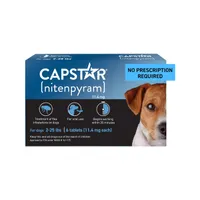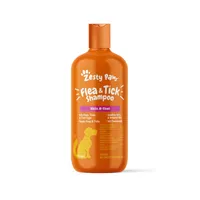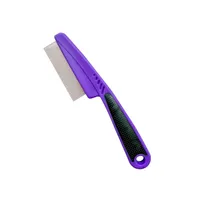What kills dog fleas instantly? 4 vet-approved solutions
A vet reveals what kills dog fleas instantly and why it matters

What kills dog fleas instantly? This is one of the questions I’m asked most often as a vet, usually with a touch of panic! After 14 years of treating dogs of all breeds and sizes, I’m no stranger to the dreaded flea. They are far more than a minor nuisance – they cause intense discomfort, can trigger allergic reactions, and in some cases, spread parasites or even serious diseases.
Fleas can multiply astonishingly quickly, which is why it’s so important to act fast the moment you realize your dog may have them. While long-term prevention is essential (and we’ll come to that), there are several safe and highly effective ways to kill fleas instantly once they’re already on your dog. It is very important that all dog owners know how to get rid of fleas.
In this guide, I’ll break down the best fast-acting treatments, how to tell if your dog has fleas in the first place, and how to prevent another infestation. If you’re considering your medication options, don’t miss our best flea treatment for dogs guide, which is packed with vet-approved recommendations.
What kills dog fleas instantly?
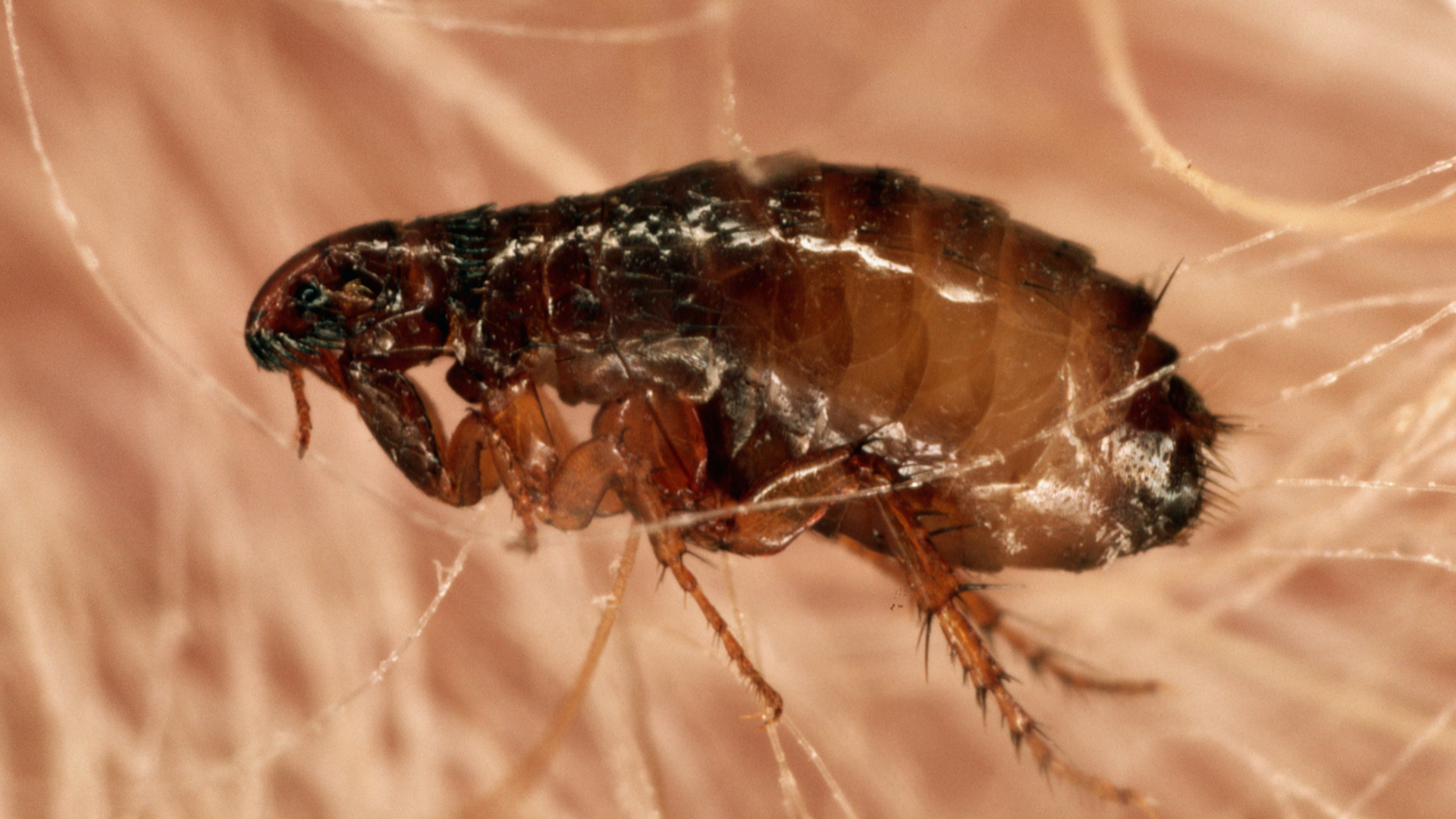
If your goal is to kill fleas on your dog as quickly as possible, here are the most effective treatments we use in practice and recommend for home use. These options are fast-acting, clinically proven, and safe when used correctly.
1. Prescription oral flea tablets
Speed: Kills fleas within 30 minutes to four hours
This is my go-to in urgent cases. Products like Capstar (nitenpyram) are fast-acting oral flea treatments that start killing adult fleas almost immediately. They work by interfering with the flea’s nervous system, leading to rapid death.
It needs to be prescribed for the correct dose based on your dog’s weight. It needs to be used in combination with a longer-term treatment, since it only kills adult fleas present at the time – it doesn’t offer ongoing protection.
Get the best advice, tips and top tech for your beloved Pets
Capstar Flea Tablets for Dogs | Amazon
These oral tablets contain 57mg of nitenpyram, a fast-acting ingredient that starts killing fleas within 30 minutes. It’s ideal for tackling acute flea infestations, offering quick relief while you put a long-term prevention plan in place.
2. Fast-acting topical spot-ons
Speed: Kills fleas within 12–24 hours
Products like Advantage (imidacloprid) and Frontline (fipronil) kill fleas through contact – meaning the flea doesn’t have to bite the dog to die. They’re applied to the skin between the shoulder blades and spread across the body via natural oils in the skin.
The product is applied to clean, dry skin and you must avoid bathing your dog for at least 48 hours before and after application. Always read the label and use products specifically formulated for dogs under veterinary instruction.
Frontline Plus Treatment | Amazon
A waterproof spot-on solution that provides 30 days of protection against fleas, ticks, lice, eggs and larvae.
3. Flea-killing shampoos
Speed: Immediate effect during use
Medicated flea shampoos can kill adult fleas on contact. They’re ideal in severe infestations when you want to physically remove a large number of fleas quickly. They must be used with caution, as they will only kill adult fleas.
If your dog has a flea infestation, prescription medication, and professional guidance are required, and they should never be used on their own. To use the shampoo, lather your dog thoroughly, working the shampoo down to the skin.
Leave it on for the recommended time (usually five to 10 minutes), then rinse well. Always follow up with a long-term flea control method from your vet.
Zesty Paws Flea and Tick Shampoo | Amazon
This vet-formulated shampoo kills fleas, ticks, and their eggs, while soothing irritated skin.
4. Flea combs
Speed: Instant physical removal, but does not kill all fleas present or address other stages of the flea life cycle
A fine-toothed flea comb can be used to trap and remove adult fleas manually (similar to how nits are removed in humans). Comb slowly through the fur, especially around the neck, back, tail base, and groin. It’s important to note this is not a stand-alone treatment, but it is useful as a supplement to chemical control.
Flea Comb with Rubber Handle | Amazon
An affordable flea comb that removes pesky parasites from your dog’s fur and features a rubber handle for a comfortable, secure grip.
Signs your dog has fleas
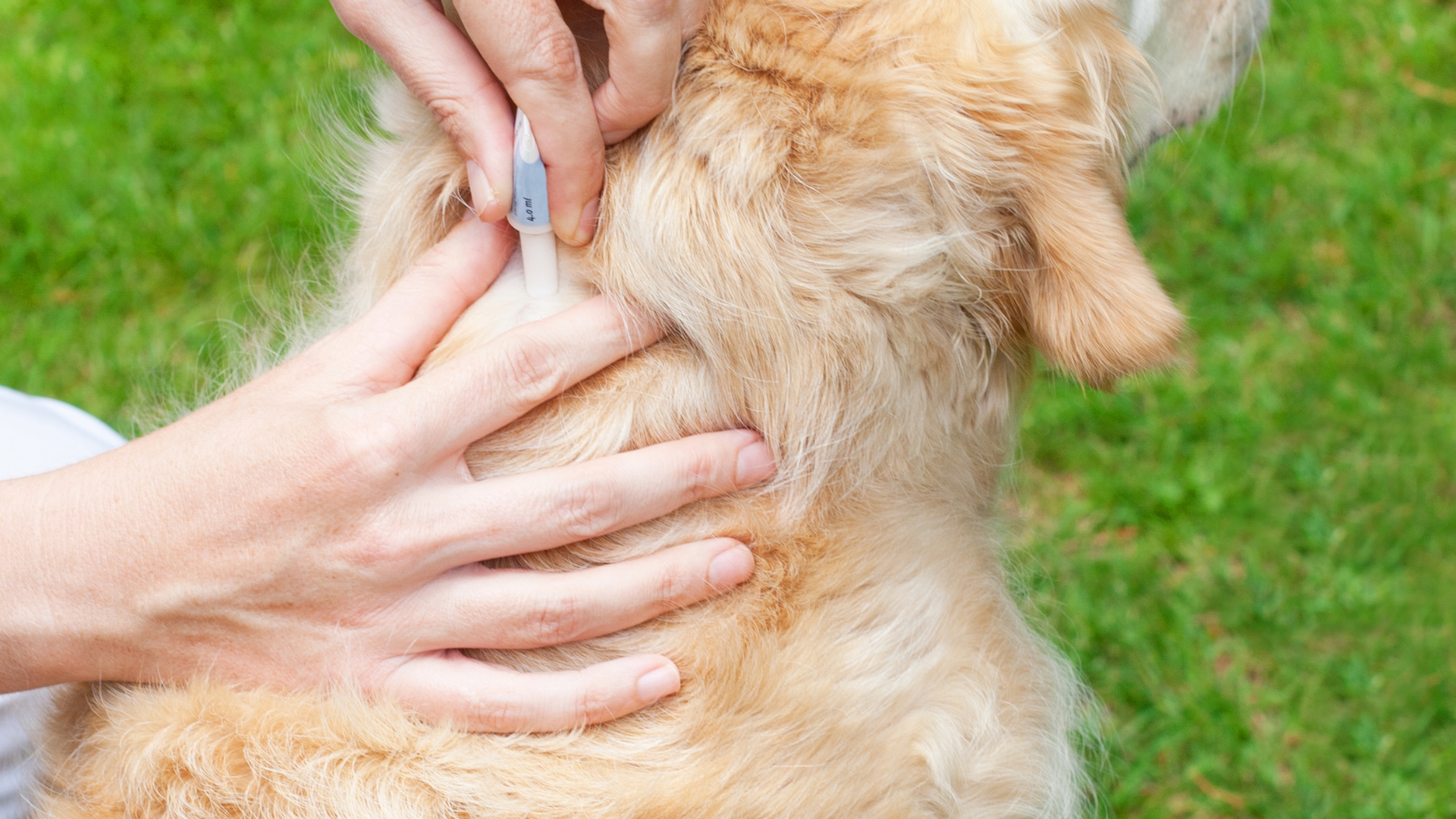
Many owners assume fleas are easy to spot, but they can be incredibly sneaky. Here are the most common signs your dog might be dealing with fleas:
- Excessive scratching, biting, or licking: This happens especially around the tail, belly, or inner thighs
- Flea dirt: Small black specks (flea feces) that look like ground pepper; if you put them on a wet paper towel, they’ll turn reddish-brown
- Hair loss or thinning patches: This is often from self-trauma
- Scabs or red, inflamed skin: This can be caused by flea allergy dermatitis
- Live fleas: You might spot one crawling, particularly around the neck, tail base, or belly
- Restlessness or irritability: Some dogs become more unsettled due to constant itching
- Pale gums: In severe infestations, fleas can cause anemia, particularly in puppies or small breeds
If in doubt, part the fur and look closely near the skin – or use a flea comb. Just be aware, fleas move fast, so a quick visual check often misses them.
How to prevent fleas
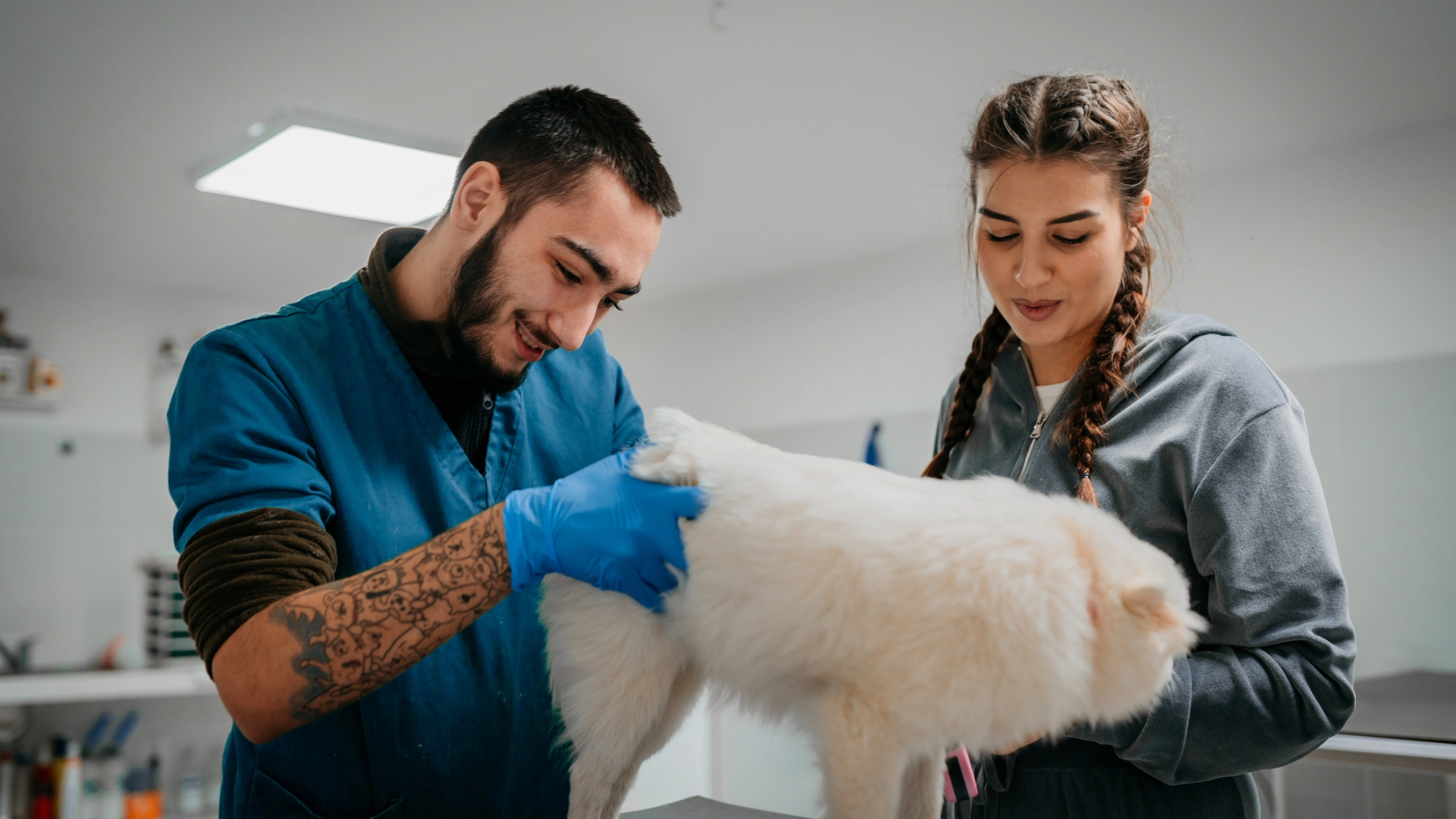
Once you've dealt with the current infestation, it's essential to prevent fleas from coming back. Here’s what I recommend to my clients:
- Use a monthly flea preventative: Choose a prescription or vet-recommended product that offers long-term protection. This includes spot-on treatments and oral medications. Consistency is key – don’t skip doses!
- Treat all pets in the household: Even if one dog shows signs, every pet in the home, including cats, must be treated. Fleas can jump from one animal to another and thrive undetected.
- Clean the environment thoroughly: Only about 5% of the flea population lives on your pet. The other 95% is in your home – as eggs, larvae, and pupae in carpets, bedding, and cracks in the floor.
- Wash all bedding on a hot cycle
- Vacuum daily (especially edges and upholstery)
- Use an environmental spray that contains an insect growth regulator (like this one from Amazon) to prevent flea eggs from hatching
- Use flea preventatives year-round: Fleas are not just a summer problem. Central heating keeps them active in winter, so it’s crucial to maintain protection all year round – not just during warmer months.
- Check your dog regularly: Regular grooming and use of a flea comb can help you catch any early signs of re-infestation. Early detection makes management far easier.
So, what kills dog fleas instantly? The answer depends on your dog’s needs, the severity of the infestation, and your long-term flea control plan.
Fast-acting oral medications like nitenpyram, topical spot-ons, or flea shampoos can provide immediate relief, but they should always be used as part of a wider strategy – including environment control and monthly preventatives.
As a vet, I can’t stress enough how much prevention is easier than treatment. With the right combination of fast actions, consistent prevention, and regular checks, you can keep your dog and your home flea-free all year long.
Read next: Safest flea treatment for dogs and flea medicine vs collars

Emma Chandley is a vet with 14 years of experience and has a keen interest in surgery. After graduating from the Royal Vet College in London in 2011, she achieved a postgraduate certificate in small animal surgery from the British Small Animal Veterinary Association and Nottingham Trent University. She was then awarded advanced practitioner status in the same discipline by The Royal College of Veterinary Surgeons. She has a black Labrador and two pygmy goats at home.
Edited by Megan Milstead.
This feature was last updated in August 2025 by Emma Chandley.
Emma Chandley is a vet with 14 years of experience and has a keen interest in surgery. After graduating from the Royal Vet College in London in 2011, she achieved a postgraduate certificate in small animal surgery from the British Small Animal Veterinary Association and Nottingham Trent University. She was then awarded advanced practitioner status in the same discipline by The Royal College of Veterinary Surgeons. She has a black Labrador and two pygmy goats at home.
